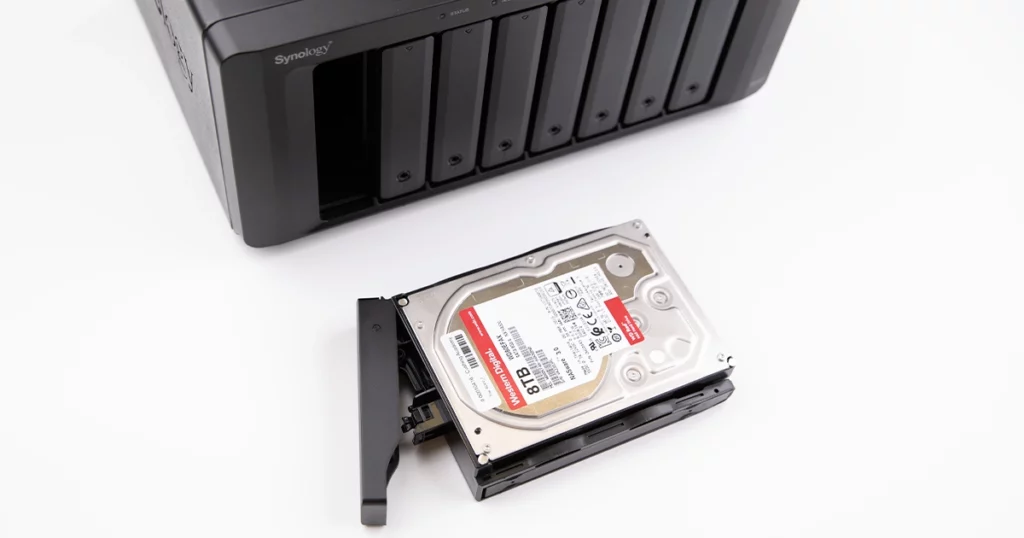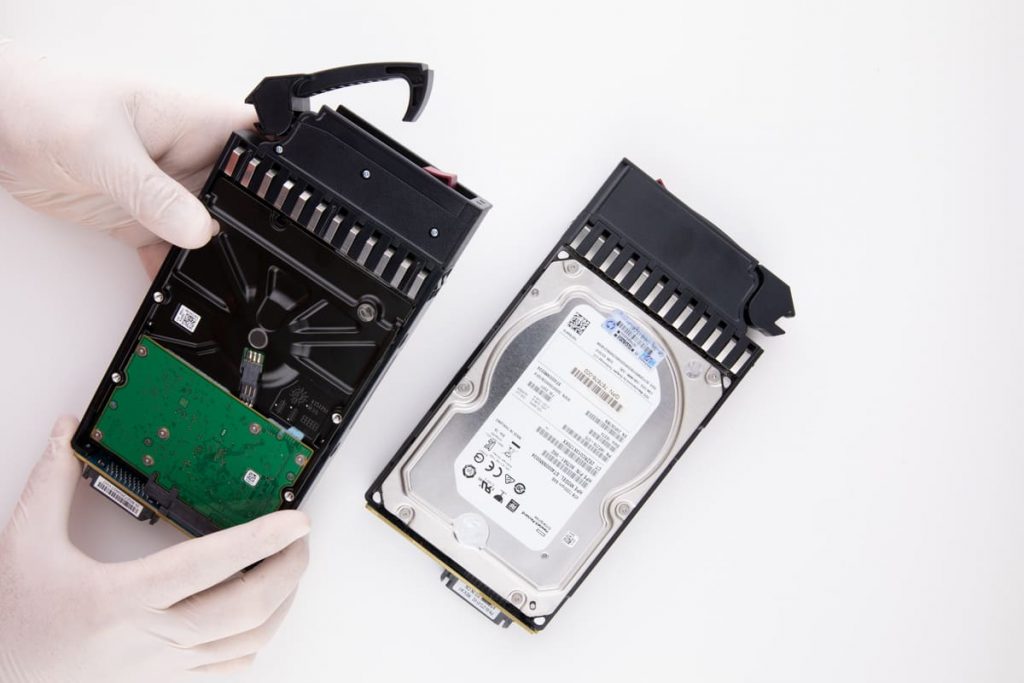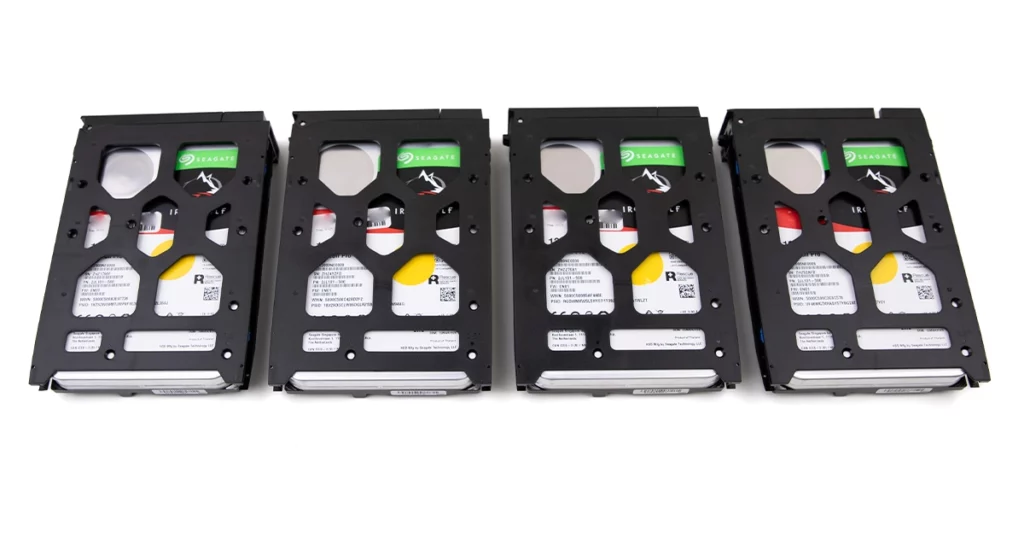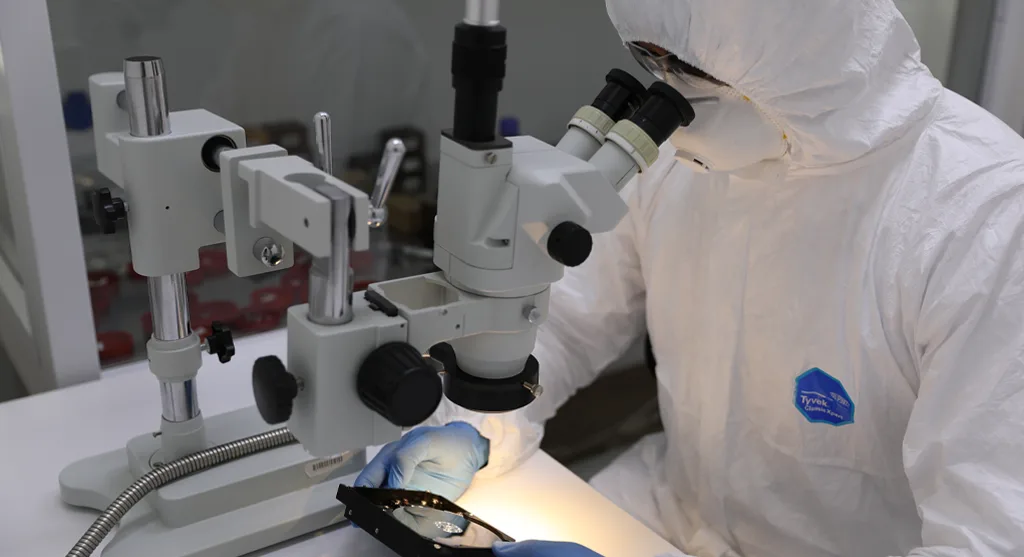SAS drives are widely used in enterprise servers and storage arrays because of their speed, durability, and reliability. When one of these drives does not show up, it can quickly disrupt operations and put valuable data at risk. Whether you are managing a single server or a complex RAID system, a missing SAS drive is a problem that cannot be ignored.
In many cases, the issue may be as simple as a loose cable or a driver conflict. In others, it may point to a failing drive or a deeper problem within the storage system. The challenge is that you often cannot tell at first glance how serious the issue is, which makes careful troubleshooting essential.
This guide will help you understand the most common reasons a SAS drive might not appear, what steps you can take to diagnose the problem, and how RAID arrays are affected when drives go offline. We will also explain when it is best to involve professionals to avoid permanent data loss.

Why a SAS Drive Might Not Show Up
When a SAS drive disappears from your system, the cause can range from simple connection issues to serious hardware failure. Understanding the possibilities helps you avoid risky guesses.
Common reasons include:
Loose or faulty connections – Damaged SAS cables, bad ports, or a failing backplane can stop the drive from being recognised.
Controller or firmware issues – Outdated firmware or a RAID controller problem may prevent proper detection.
Driver conflicts – Missing or corrupted drivers in the operating system can block access to the drive.
Logical corruption – File system errors or initialisation failures may cause the drive to appear missing.
Physical drive failure – Mechanical or electronic failure inside the drive itself can result in no detection at all.
Each of these scenarios requires a different approach. Some can be fixed with basic checks, while others signal deeper risks that need expert attention.
Troubleshooting Steps You Can Try Safely
Before assuming the worst, you can run a few basic checks to rule out simple issues. These steps are safe and can help you determine whether the problem is minor or more serious.
Make sure the SAS cable is firmly seated in both the drive and controller. Inspect for bent pins or visible cable damage.
A faulty cable or port can cause the drive to disappear. Swap components to see if the drive is detected.
Log in to the RAID controller or storage manager. If the controller does not recognize the drive, firmware updates or controller faults may be involved.
Confirm that the correct drivers are installed and up to date. Check disk management tools to see if the drive appears but is uninitialized.
Clicking noises, slow spin-up, or repeated disconnects often indicate drive failure rather than a simple configuration issue.
If the drive remains invisible after these checks, the problem may go deeper, especially in RAID environments.

How Missing SAS Drives Affect RAID Arrays
In standalone use, a SAS drive that does not show up is inconvenient. In a RAID system, the consequences can be much more serious. A single missing drive can change the health of the entire array.
RAID 1 or RAID 10 – The array may still run, but redundancy is reduced. If another drive fails, data loss is likely.
RAID 5 – One missing SAS drive puts the array in degraded mode. Performance drops, and a second failure will cause total data loss.
RAID 6 – The system can tolerate two missing drives, but performance suffers and further failures cannot be recovered.
JBOD or RAID 0 – A missing drive means immediate data loss, since no redundancy exists.
In many cases, the drive may not show up in the operating system but could still be partially detected by the RAID controller. This is a warning sign that the drive is unstable. Continuing to run the array in this state increases the risk of a complete failure.
Fast turnaround times for business-critical data
The Risks of DIY Fixes in RAID Systems
When a SAS drive goes missing in a RAID, it may be tempting to rebuild the array or swap drives right away. However, these actions often create bigger problems.
Forced rebuilds can overwrite data – If the wrong drive is marked as failed, a rebuild can destroy the data you are trying to protect. Read more about the risks of RAID rebuilds
and why caution is critical.Reinitializing the array erases information – Resetting or reformatting may make the drives appear online, but the data structure is lost.
Mixing drives between systems causes conflicts – Moving SAS drives to a different controller without the same configuration can corrupt the RAID.
Repeated power cycling adds stress – Restarting servers again and again can push a failing drive over the edge.
The main risk is that a simple detection issue can quickly turn into permanent data loss. RAID systems rely on precise order and consistency, which is why professional handling is often necessary once a SAS drive disappears.

When It’s Time to Call a Professional
Not every missing SAS drive requires expert help, but certain warning signs mean it is safer to stop and involve specialists.
The drive is not detected even after checking cables, ports, and drivers.
Multiple drives are offline in the RAID array.
The RAID controller shows errors or degraded mode.
The drive makes unusual noises or disappears intermittently.
Previous rebuild attempts have failed or caused data corruption.
At this point, forcing more fixes risks permanent data loss. Professional engineers have the tools to diagnose controller issues, recover failing drives, and rebuild RAID arrays without risking further damage.
At RAID Recovery Services, we specialise in handling complex SAS and RAID problems. Our team can evaluate your situation, create a safe recovery plan, and protect your data when standard troubleshooting no longer works.
Tips to Prevent Future SAS Drive Issues
While some failures cannot be avoided, regular care reduces the chances of SAS drives disappearing unexpectedly.
Monitor drive health – Use RAID controller logs and monitoring tools to watch for early warning signs like increasing error counts.
Keep firmware and drivers updated – Updates from the manufacturer often include fixes for detection and stability issues.
Check cables and connections regularly – Dust, wear, or loose seating can cause drives to drop offline.
Maintain proper cooling – Overheating shortens drive life and increases error rates.
Use reliable power sources – Power surges and sudden power cuts can damage both the drive and controller.
Have a backup strategy – Even with RAID, regular backups are essential to avoid data loss.
These steps will not eliminate every problem, but they help extend the life of your storage and make troubleshooting easier when issues occur.

Conclusion
A SAS drive that does not show up can be caused by something simple, like a loose cable, or something much more serious, such as a failing drive inside a RAID array. The key is to start with safe troubleshooting steps, understand how RAID health is affected, and avoid risky fixes that can cause permanent data loss.
If you cannot restore visibility after basic checks, or if your RAID system is already degraded, it is best to stop before the situation worsens.
At RAID Recovery Services, we help organisations handle these problems with specialised tools and expertise. Our team can safely recover data and restore stability when SAS drives go missing.
Taking proactive steps like monitoring drive health, updating firmware, and maintaining backups will also reduce the risk of future issues. With the right care and professional support when needed, you can keep your systems running and protect the data that matters most.
Trust the experts with proven results
Frequently Asked Questions
Why is my SAS drive not showing up in a RAID array?
This usually happens because the drive has failed, the connection is unstable, or the RAID controller cannot detect it. Even if only one drive is missing, the whole array may be at risk.
Can I fix a SAS drive not showing up on my own?
You can try safe steps like checking cables, ports, drivers, and controller settings. If the drive is still missing, avoid rebuilds or resets. These can cause permanent data loss.
What happens if I remove and reinsert a SAS drive?
In a RAID environment, reseating a drive can sometimes help, but it can also confuse the controller or trigger a rebuild. Always proceed with caution and avoid repeated attempts.
When should I contact professionals?
If the drive remains undetected after basic checks, or if multiple RAID drives are offline, it is safer to stop troubleshooting and seek professional help.